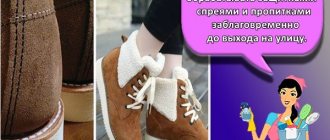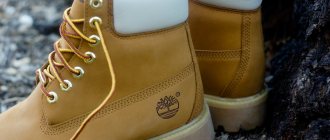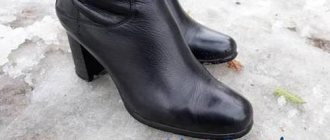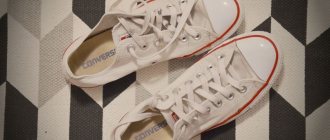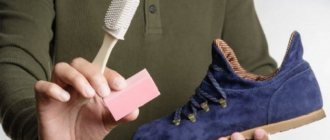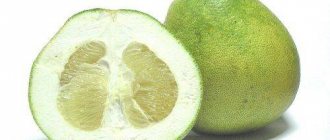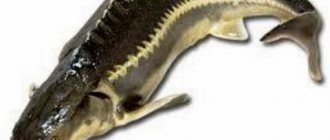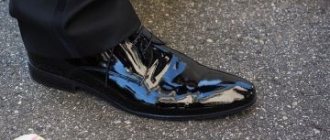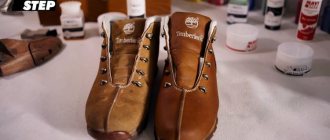Proper care of velor shoes
Sub-zero temperatures for natural velor are not as scary as walking in the rain or stepping into a puddle, so the first rule of caring for velor shoes is to go out only in dry weather. Other recommendations for any pair of this type of pile material:
- Drying shoes away from artificial air heating devices;
- Cleaning stains of any origin must be done on dry material;
- To preserve the original color of the shoes, it is necessary to protect the product from direct sunlight.
Even with proper care and compliance with all conditions to preserve the appearance of a beautiful pair, situations arise when it is necessary to eliminate stains or restore the softness and brightness of color to the pile. To correct such nuances, there are special cosmetics for velor shoes, as well as a collection of folk methods that perform the same functions with less money.
Among the professional tools that will help you properly care for velor:
- Stain removers in the form of foaming sprays and liquids in a bottle with a sponge;
- Erasers for cleaning mud stains;
- Dyes or color restorers;
- Brushes of several levels of hardness;
- Water-repellent impregnations.
The rehabilitation of velor, that is, the return of a product that has lost its appearance to its original appearance, should only be entrusted to specialized means. Homemade methods to restore faded boots to a bright color or to disguise deep damage will not work.
Folk remedies
One of the best ways to preserve shoes is to use products recommended by manufacturers for impregnating velor. To protect against moisture, they are immediately applied to a new pair (preferably several times for greater effect). After each treatment, the shoes must be dried for at least 3 hours. These water-repellent agents can be used in the future, after cleaning and caring for moccasins or boots, but the main thing is not to forget about them from the very beginning.
To get rid of stains, you will need a cleaner, which is applied in the form of foam to the dirty surface. Some velor lovers are able to clean it with carpet detergent.
There are simple but reliable products that help with care. For example, wax can be used to carefully process seams. To remove grease stains it is recommended:
- vinegar solution;
- ammonia.
There are aerosols with a special coloring composition that are used to restore color.
A special brush for such shoes (hair or rubber) is used only for dry shoes. When cleaning velor, they do it without much pressure.
In winter, shoes (sometimes worn in cold snowy weather) are cleaned of unpleasant stains of road reagents only with special means. There are special sponges and wipes on sale to care for velor and suede.
It is very useful to use shoe fresheners and deodorants that are applied to the inside of shoes or boots. For moccasins or ballet shoes that are worn without socks, this is an indispensable tool that relieves shoes of an unpleasant odor. Traditional methods (with soda, activated carbon, etc.) are not so effective and are very troublesome. Spraying with an aerosol at night is ideal.
Differences in caring for natural and artificial velor
The beautiful outer side of velor has a rough, velvety surface, which has a lot of advantages, but is also quite finicky to care for. The raw materials are made from goat or pig skins, which indicates the high wearability of the shoe frame; however, a model that has lost its presentable appearance, even if all wearable qualities are preserved, is not suitable for publication. For this reason, many thrifty consumers, when planning a purchase, choose shoes made from artificial material, which is cheaper in cost and more tolerant of changeable weather conditions.
Natural velor quickly becomes filled with dust, and can only be cleaned with a special brush using movements against the pile, which is already a difficult procedure, since the “smoothing” of the villi should not be allowed. Artificial velor can be washed with warm soapy water and even turpentine can be used to clean complex stains, and to raise the pile, you can buy not a set of brushes of varying hardness, but one rubber one.
Leather shoes will have to be hidden from the sun, and if they fade, you will have to purchase an expensive aerosol dye of the strictly required shade; the velor-like material reacts calmly to ultraviolet radiation, and to properly protect the color and structure, it is sometimes enough to treat it with inexpensive textile impregnations.
General tips for caring for both materials include cleaning the product after it has completely dried and gently drying it at room temperature and without using heating devices.
Basic Rules
Just like suede, velor can only be cleaned. If dust or dirt appears on the shoes, it can only be removed from the surface mechanically. Such leather should not be wetted or even wiped with a damp cloth. For cleaning, you should use brushes that are specifically designed for this purpose. Also suitable:
- flannel or wool rags;
- regular office eraser;
- shoe brush with soft natural bristles.
A foam cleaner is suitable for removing the most persistent and problematic stains. A small amount of spray will return velor shoes to their perfect appearance. To do this, simply spray the product onto the problem area, wait until it dries completely, then brush off the dirt.
Do not clean wet or damp shoes. Boots or boots made of velor should be dried first. To prevent the leather from becoming deformed and drying out, do not place shoes near radiators, convectors or other heat sources. It is better to put crumpled paper inside and change it from time to time. It will absorb moisture, while the skin will dry naturally and will not suffer from drying. It would also be ideal to use special electric dryers, which provide a gentle treatment and do not harm the skin.
Regular care of velor shoes in winter also means applying moisture-proof impregnation after each cleaning procedure.
Velor shoes are usually soft and comfortable. It is well suited for those who cannot wear tight shoes. But you need to remember that velor products are worn only in dry weather. They are not afraid of frost, but puddles, mud, and walks in the rain have a detrimental effect on them. To maintain an attractive appearance of the couple, you need to apply basic rules of care:
- dry in a warm place, but away from heating devices;
- clean from dust with a dry sponge or woolen cloth;
- You can only clean dry shoes from stains - the dirt must first dry, otherwise it is easy to smear;
- Products must be protected from sunlight, otherwise they will fade.
Caring for new shoes
As a rule, before putting on a velor pair for the first time, a thorough three-time impregnation is carried out, protecting the shoes from moisture, dirt and the chemical effects of road reagents.
Primary impregnation, done according to all the rules, provides a certain margin of safety for all subsequent wear.
It will not be possible to perform the action using improvised means - neither glycerin nor other substances from the pharmacy are suitable for velor, so buying a good spray cannot be avoided.
The liquid is sprayed onto the material from a distance of 20 cm until deeply moistened, then the shoes are kept for 2-3 hours until completely dry and the procedure is repeated. In total, pile shoes require three approaches of impregnation, after which, after a few hours, you can go outside in them.
Folk remedies
If moisture accidentally gets on a new pair, the lint can gather into hard, sharp lumps that are difficult to separate into individual lint and do not become softer when combed with a brush. A steam procedure will help. The boot needs to be held over a pan of boiling water for 1-2 minutes, turning the product so that the entire surface of the velor is slightly “soaked”. After this, the shoes should be thoroughly wiped with flannel or cloth, and after half an hour, the pile should be “knocked out” with a stiff brush.
To clean dirt from the new model, a crust of dried bread is suitable, which is used to rub the dirty area in a circular motion, and then wipe off the crumbs with a dry napkin. To remove critical greasy stains, talc, starch or baby powder are used - the powder is sprinkled on the stain, and after five minutes the problem area is gently wiped with a cloth.
Professional products
The primary treatment of new shoes, as the most important step in their potential protection, is carried out only with special means; amateur activities are unacceptable here:
- Collonil “Carbon Pro” is an aerosol impregnation with a protective layer effect based on polymer fibers. Seams treated with the compound do not allow moisture to pass through, and dirt flows off the surface of the shoe without causing harm to it. Protects colors from fading;
- Duke Velor Cleaner - an eraser for cleaning stains of non-greasy origin - can only be used on dry velor. It saves you from glossiness, but on the condition that when treating a shiny or dirty area, the treatment will be carried out without pressure.
It is best to buy impregnation agents and dyes for renovation at the retail outlet where the shoes were purchased.
Preparation
- After returning from the street, shoes should be cleaned of dust and dirt using a brush or a slightly damp cloth if the shoes are very dirty;
- Then, in case of severe contamination, you need to remove the old cream from the surface of the leather, using special shoe shampoos;
- After this, apply a suitable shoe polish of the desired color in a not too thick layer;
- Shoes should be polished a couple of hours after applying the cream, using special brushes or fur velvet cloths. Do not put too much pressure on the skin.
Important! Choose a brand according to your financial capabilities. This could be “Salamander”, “Twist” or their analogues. The can will be marked for what material the product is intended for. Read it carefully.
How to care for velor shoes in winter
A snowy, frosty winter without slushy periods is a favorable time for velor renewal and all daily care will consist only of shaking off the snow from the surface of the shoes upon arrival home. Ice already poses a great danger to the material - roads are sprinkled with reagents that have a detrimental effect on velor. Therefore, traditionally, an expensive winter model made of capricious pile leather is not considered intended for daily wear and is reserved for mild snowy periods or dry weather.
At this seasonal stage, products that protect against moisture penetration and instantly remove traces of salt and chemical compounds from shoes are relevant.
Folk remedies
Non-critical stains or stains from the sand used to sprinkle sidewalks can be cleaned with a stationery eraser made of white rubber or a transparent substance containing silicone. Then you need to use a hair brush, which will restore the pattern of the pile and remove the “pellets” of used rubber.
Old complex stains left from last year, or aggravated by unsuccessful attempts at grouting, are removed with gasoline or vinegar diluted with water (1:1). Medium stains can be removed with ethyl alcohol. However, these methods require preliminary testing on an inconspicuous area of the leather product.
Professional products
In winter, the emphasis on proper care of a velor product is on protecting it from moisture and road reagents, which is why intensive impregnations and cleaning fluids are widely used:
- Salamander Professional (Winter Proper) - the spray is sprayed onto the entire surface of the shoe, as the treated area will become a little brighter. Then use a sponge to wipe the areas of contamination locally. Pre-testing required;
- Saphir (Omni Diam) for “general” cleaning of heavily soiled shoes from stains of any depth of penetration. Removes greasy, salt and mud stains, restores color. The product comes with a brush, which foams the product directly on the surface of the boots.
After products that strongly moisturize the skin, it is recommended to perform steam treatment over boiling water or using a household steam generator.
Chemistry
There are many professional reagents available in shoe stores. When buying a new pair of shoes, be sure to buy special cleaning and moisture protection products.
Professional products are not expensive, everyone can afford them. This is better than traditional cleaning methods because they are designed for specific materials.
How to care for velor shoes with professional chemicals:
- Collonil "Carbon Pro" is a water-repellent composition suitable for any type of material. It is used for leather, suede, nubuck and velor. The aerosol can should be shaken before use. The spray is evenly distributed onto pre-cleaned shoes from a distance of 30 cm, this is important, otherwise smudges will form. That's all. Now leave the items to dry.
- Duke Velor Cleaner is an eraser. It can be used to remove dirt from velor products. Simply rub the eraser over the problem areas without applying too much pressure to the fabric.
- Salamander Professional (Winter Proper) is used in winter. This product perfectly removes salt and snow stains. If white stains form on your shoes, use this composition immediately. Take a kitchen sponge (clean, of course), apply the product to it and press it onto the problem areas. Gently wipe Salamander Professional (Winter Proper) and leave to dry. Then apply a protective composition that has water-repellent properties.
- Saphir (Omni Diam). The unique formula of this product allows you to remove even old stubborn dirt. Saphir (Omni Diam) is used for cleaning suede, nubuck, velor and other synthetic fabrics. Method of application: pour the composition into a separate container, moisten a special brush in it, and treat the surfaces. Then rinse the brush with water and remove any remaining product with a damp cloth. Leave the shoes to dry for 6 hours in a well-ventilated area, then lift the pile with a brush.
- Salamander Professional (Combi Proper) is a foam shampoo designed to thoroughly clean velor shoes from dirt and stains. If you want your products to always look well-groomed, use this product. Application: apply the composition to a sponge, treat the velor, leave to dry. Brush over the surface to lift the lint.
Professional chemistry effectively removes contaminants. All of these products only need to be used once to remove stains.
Before using professional reagents, test their effects with velor fabric.
Buy products only from trusted stores. There are many fakes on the modern market that do not remove dirt well even the second time.
How to care for velor shoes in summer
Dust, which gets into the pores of light but impractical summer shoes, especially if they are closed women's shoes or men's moccasins with complex trim, suppresses the rich color of the product, making it dull, and the dust suspension, whipped up by rain into liquid dirt, eats into the shoes and penetrates into deep layers of skin. Foam cleaners specifically for velor leather, nubuck or suede help to clean such contaminants, and from home remedies they choose proven methods recommended only during the warm period, when shoes dry quickly.
Folk remedies
To clean shoes from splashes of liquid dirt, a weakly concentrated solution of baby laundry detergent or laundry soap will help.
You cannot wash shoes with this composition - you need to moisten a flannel napkin, wring it out and wipe the stained area previously treated with a brush with a cloth.
Another remedy from the same collection is ammonia, diluted 1:5 with purified water. Using a cotton pad moistened with this product, wipe the area with the stain locally. No further rinsing is required.
Professional products
To clean dust particles from the surface of pile leather, double-sided brushes are purchased, in which the soft side - made of rubber, nylon or hair - directly removes dust, and the other side, made of plastic or metal, gives the pile its original pattern.
Among the cleaning products recommended for summer shoes:
- Salamander Professional (Combi Proper) is a foamy substance from a German manufacturer that is suitable for color pigments of any durability, as well as for products made from combined materials. Apply to the dirt and spread with a foam sponge. After 3-5 minutes, wipe the shoes with a dry cloth and fluff up the pile;
- Shoe Clean is a cleaner for serious stains that comes with a brush and a small sponge. The composition contains citric acid as a color fixative, so the pigment of the shoe surface does not suffer.
Despite the growing popularity of returning to traditional methods for caring for clothes and shoes, professionals warn against blind trust in methods from the “folk piggy bank.” Production technologies for tanning pile leather do not stand still, which means many methods from the past are losing relevance. Before using any such product, you need to check its effect on the inside of the shoe and only then use the composition on the front side.
Smell
Caring for velor shoes also involves removing unpleasant odors. This topic is very sensitive, since not many people can accept the fact that their feet sweat a lot and because of this, a stink appears.
If you do not regularly clean the inside of the velor, active growth of bacteria begins. Not only will they cause mold to form inside due to constant moisture, but they can also cause foot fungus, which is difficult to cure.
How to clean the inside of velor products from odor:
- Use hydrogen peroxide. Dilute it with water in a ratio of 1:2 or 1:3, and treat the internal surfaces with the liquid. Then dry the pair.
- A solution of potassium permanganate also removes unpleasant aroma. It should be slightly pink.
- Baking soda, sea salt, and activated carbon help remove the unpleasant stench. They also clean the inside surfaces of velor boots. Take a damp cloth and wipe the inside of the shoes, this is necessary so that the products used stick to the walls. Then sprinkle the treated surfaces with the selected composition. After a while, shake out the product and vacuum inside. The smell will disappear, and at the same time the shoes will be cleaned.
- The inside of your boots can be tidied up using tooth powder and a brush. Just don't get it wet. Dry processing.
Comparison of materials
They look very similar, so many people confuse these materials. Their main comparative characteristics are presented in the table:
| Suede | Velours | |
| Velvety | On both sides | On the one hand, but with a thicker pile |
| Moisture resistance | Stable | May become deformed after contact with water, gets wet |
| Can be cleaned with soapy water | Can be cleaned with soap, does not deform, does not change structure | Soap solution is contraindicated; the fabric loses its original appearance and streaks may appear. |
| Price | Expensive due to complex production | Affordable price |
| Color | Color may have several shades | Plain |
| Smell | Has no odors | There is a smell of genuine leather |
| Surface properties | May have scratches and pores. Fingerprints and traces of contact with other objects do not remain | The surface has a solid structure, on which fingerprints constantly remain due to the fact that the pile is quite long and can change direction |
| Hemming of products | They don't bend | Bend in |
What is
Genuine leather is an absolute favorite in the shoe industry, and its variations allow you to create real designer masterpieces. One of the most exquisite varieties is velor or “leather velvet”.
Velor for shoes is made from the skins of young cattle, sheep, and pigs. Leather with small defects on the front side is often used. It is tanned using the chrome method, using chemical salts to enhance hairiness. The skins are carefully sanded, obtaining a low, dense pile of uniform color. The process can use various types of starch, simple proteins, and vegetable glue.
To make velor moisture-resistant, aluminum and chrome soaps and silicone are used. The fabric is dyed in rich colors; this process is quite labor-intensive, since the material does not absorb pigment well.
It is difficult for an inexperienced person to understand the difference between velor and suede, since the materials have a similar structure. However, the latter type is produced in a different way. The canvases also differ in appearance and feel - “leather velvet” has a shorter, denser pile, and its surface is softer.
